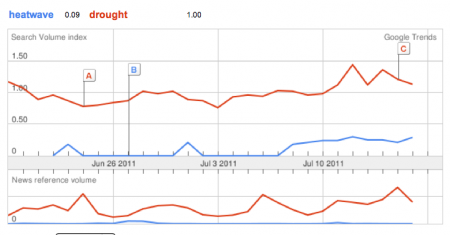IISD’s report on the special information seminar that was held last Saturday at FAO headquarters in Rome, under the title “Climate Change and Genetic Resources for Food and Agriculture: State of Knowledge, Risks and Opportunities,” is out.
I must say I just don’t know what to make of stuff like this:
On conservation, several participants called for stronger focus on in situ conservation, with panelists noting that ex situ and in situ conservation are complementary strategies. Cock added that conservation must also ensure accessibility to realize appropriate deployment.
Surely we had that debate twenty years ago? Anyway, here’s the bottom line, in case you don’t want to plough through the whole pdf:
…Hodgkin said the morning session had shown that there is increasing acceptance of the ecosystem approach and the concept of ecosystem services in addressing linkages with climate change. Other messages included the: importance of accessibility of genetic resources and availability of information, especially in developing countries; different roles of in situ and ex situ conservation in addressing risks and enabling responses; need for an inter-sectoral approach to adaptation and mitigation; and recognition that climate change leads to the movement of agricultural biodiversity and creates a need for informed decisions of deliberate movements of germplasm.
The key messages from the afternoon session were: while climate change is being embedded in many agricultural strategies and plans, agriculture still needs to be embedded in climate change measures; there is a need for institutions and mechanisms to supply seeds to users; and there is a great need for capacity building activities for adaptation, such as evaluation and characterization.
Chair Mozafari added that participants had recognized the need: for the agriculture community to take action to ensure that GRFA are properly reflected in climate change efforts; to improve the knowledge base, in particular national knowledge on wild crop relatives and wild species; to reconcile efforts in all aspects of food security to ensure coherence; for global partnerships in research, evaluation and characterization; to prioritize the needs of the most vulnerable; and for financial resources. He suggested that CGRFA 13 reflect on how to communicate these needs to the UNFCCC and other instruments to put GRFA on the global climate change agenda.
LATER: And the report on day 1 of the regular session is out too now.
